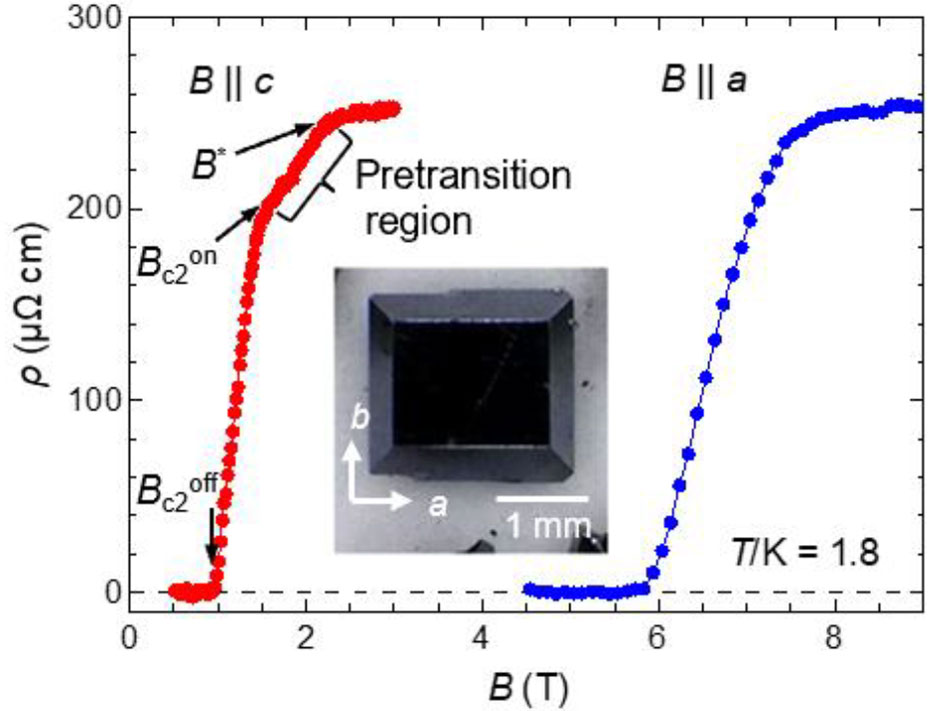PC5-1
Unusual Superconductivity in the Nodal-Line Semimetal NaAlSi
Nov. 30 12:00-12:15
*Toshiya Ikenobe1, Daigorou Hirai2, Takahiro Yamada3, Hisanori Yamane3, Zenji Hiroi1
Institute for Solid State Physics, University of Tokyo (Japan)1
Department of Applied Physics, Nagoya University (Japan)2
Institute of Multidisciplinary Research for Advanced Materials, Tohoku University (Japan)3
NaAlSi crystallizes in an anti-PbFCl-type layered structure [1] and exhibits superconductivity below Tc = 6.8 K [2,7]. The superconductivity seemed to be of the conventional s-wave type based on phonon-mediated Cooper pairing [3-6]. However, recent heat capacity measurements using single crystals of NaAlSi showed the possibility of a complex superconducting gap [7]. Interestingly, electronic state calculations showed that NaAlSi is a nodal-line semimetal [5,8,9], in which nontrivial topological surface states exist: a drumhead band at around the point in the (0 0 1) surface and a flat band along the line in the (1 0 0) surface [9].
We studied the resistive transitions under magnetic fields using plate-like single crystals of NaAlSi such as shown in Fig. 1. A significant reduction in resistivity was observed at a pre-transitional region (Bc2on--- – B*) above the bulk superconducting transition at Bc2off--- – Bc2on only in the case that the magnetic field was perpendicular to the plane, not parallel to the plane (Fig. 1). No anomaly was observed at T*(B*) in the heat capacity measurement, suggesting the existence of a fractional superconductivity different from the bulk superconductivity, although the details have not yet been clarified [10]. Meanwhile, the field dependence of the resistivity on the magnetic field parallel to the plate shows a sharp superconducting transition (Fig. 1), indicating that there is a field-angle dependence in resistive transition. In order to understand the origin of the fractional superconductivity, we measured the field dependence of the superconducting transition in electrical resistivity as a function of the magnetic field angle. We show the possibility that the fractional superconductivity has a two-dimensional character and suggest that it occurs at the crystal surface by measuring the current dependence of the transition.
Figure 1: Magnetic field dependence of the resistivity of a NaAlSi crystal at 1.8 K [7]. The red and blue curves are for B || c and a, respectively.
[1] W. Westerhaus et al., Z. Naturforsch. B 34, 352 (1979).
[2] S. Kuroiwa et al., Physica C 466, 11 (2007).
[3] L. Schoop et al., Phys. Rev. B 86, 174522 (2012).
[4] H. M. Tütüncü et al., Philos. Mag. 96, 1006 (2016).
[5] L. Muechler et al., APL Materials 7, 121103 (2019).
[6] H. Y. Wu et al., Phil. Mag. Lett. 99, 29 (2019).
[7] T. Yamada et al., J. Phys. Soc. Jpn. 90, 034710 (2021).
[8] L. Jin et al., J. Mater. Chem. C 7, 10694 (2019).
[9] X. Yi et al., J. Mater. Chem. C 7, 15375 (2019).
[10] D. Hirai et al., J. Phys. Soc. Jpn, 91, 024702 (2022).
Keywords: Superconductivity, Topological material, nodal-line semimetal
